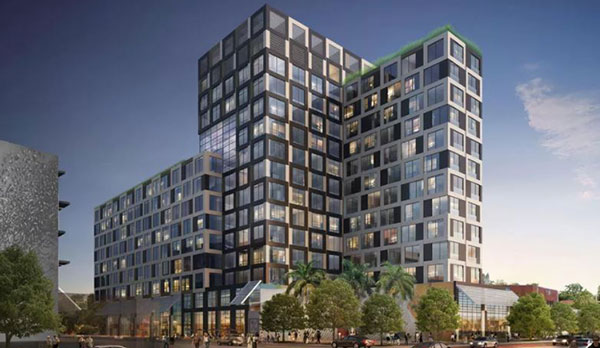The micro unit trend is about to go smaller in Miami.
The city commission on Thursday unanimously voted in favor of an ordinance that reduces the minimum size of micro units from 400 square feet to 275 square feet. However, for properties that are zoned for more than 150 units per acre, micro-unit developments would be limited to transit-oriented areas, such as near Metrorail and Metromover stations.
Supported by several prominent developers in neighborhoods like Wynwood and downtown Miami, the legislation will allow them to build more units using a smaller footprint. Yet, some developers are already working on projects that will offer apartments in the 400 square foot range, such as Wynwood 25, a mixed-used project that will have 289 residential units, under development by the Related Group and East End Capital.

Rendering of Wynwood 29 (Credit: Arquitectonica)
Related is also partnering with Tony Cho’s Metro 1 to develop Wynwood 29, a pair of mixed-used towers at the intersection of Northwest First Avenue and Northwest 28th Street. One of the buildings, a 12-story tower, will have 182 micro-condos that will range in size from 416 square feet to 900 square feet. Other developers who are bullish on micro units include Moishe Mana, Jeff Greene and Property Markets Group.
In a statement after the city commission’s vote, Cho hailed the new ordinance as a key factor in developing projects that offer affordable housing options. “Miami is evolving at a fast pace, and there is a widespread desire for walkable neighborhoods with access to public transit and quality housing attainable for a diverse group of people,” Cho said. “This legislation will allow for the type of high-quality, amenity-rich lifestyle that’s in such high demand.”
According to a 2014 Urban Land Institute study cited by city staff in documents recommending approval of the 250-square-foot minimum, smaller units usually have higher overall occupancy rates.
“Small units with less than 600 square feet were the top performers in recently finished developments as of early 2014,” the study states. “These units reported noticeably higher occupancy (91.3 percent) than the 89.6 percent rate for mid-sized units from 600 to 1,000 square feet and the 89.3 percent in large units of more than 1,000 square feet.”
